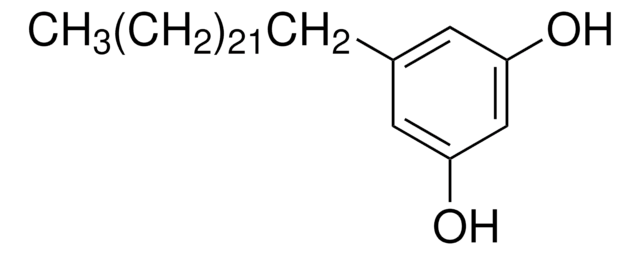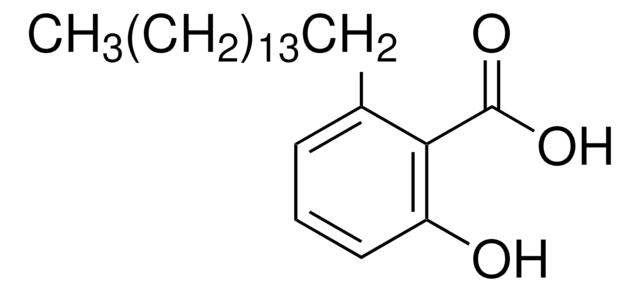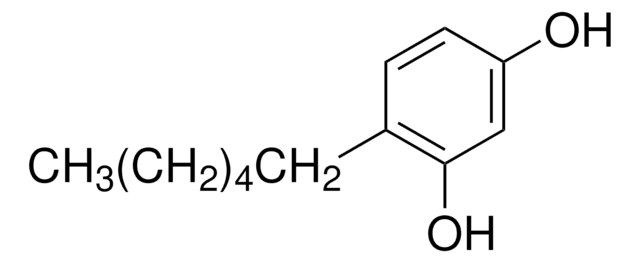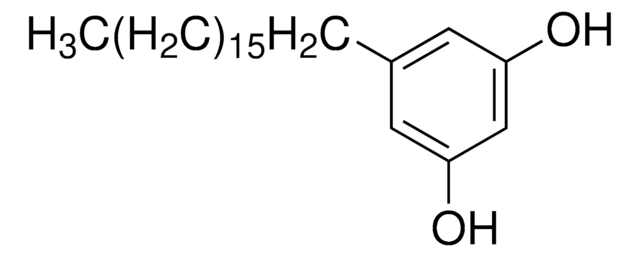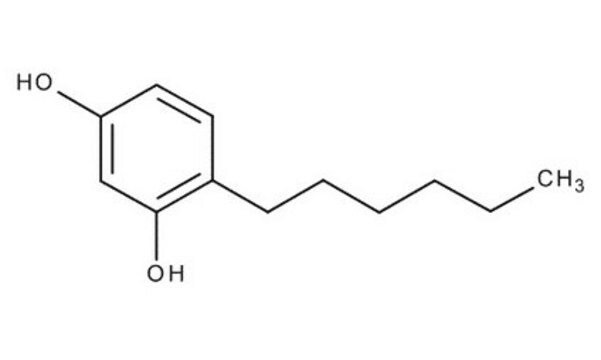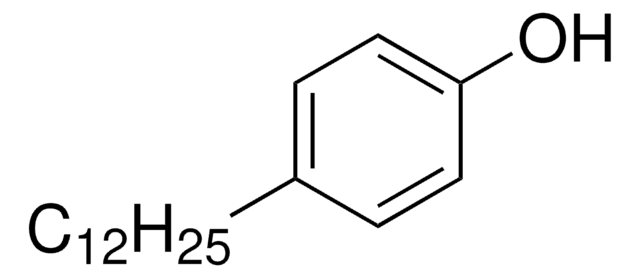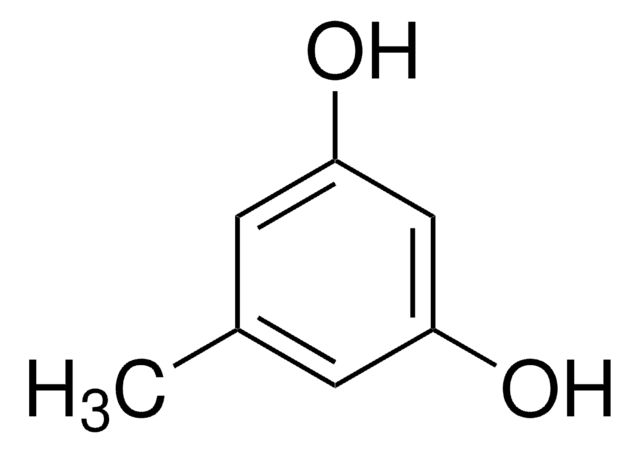91822
5-Pentadecylresorcinol
analytical standard
Sinonimo/i:
1,3-Dihydroxy-5-pentadecylbenzene, 5-Pentadecyl-1,3-benzenediol
About This Item
Prodotti consigliati
Grado
analytical standard
Livello qualitativo
Saggio
≥95.0% (HPLC)
Durata
limited shelf life, expiry date on the label
tecniche
HPLC: suitable
gas chromatography (GC): suitable
applicazioni
cleaning products
cosmetics
food and beverages
personal care
Formato
neat
Temperatura di conservazione
2-8°C
Stringa SMILE
CCCCCCCCCCCCCCCc1cc(O)cc(O)c1
InChI
1S/C21H36O2/c1-2-3-4-5-6-7-8-9-10-11-12-13-14-15-19-16-20(22)18-21(23)17-19/h16-18,22-23H,2-15H2,1H3
KVVSCMOUFCNCGX-UHFFFAOYSA-N
Descrizione generale
Applicazioni
- Goji berries using ultra-high-pressure liquid chromatography coupled with quadrupole-time-of-flight mass spectrometry (UHPLC-ESI-QTOF-MS).
- Mango (Mangifera indica L.) peels using high-performance liquid chromatography/atmospheric pressure chemical ionization mass spectrometry (HPLC/APCI-MS).
Confezionamento
Prodotti consigliati
Avvertenze
Warning
Indicazioni di pericolo
Consigli di prudenza
Classi di pericolo
Eye Irrit. 2
Codice della classe di stoccaggio
11 - Combustible Solids
Classe di pericolosità dell'acqua (WGK)
WGK 3
Punto d’infiammabilità (°F)
Not applicable
Punto d’infiammabilità (°C)
Not applicable
Scegli una delle versioni più recenti:
Possiedi già questo prodotto?
I documenti relativi ai prodotti acquistati recentemente sono disponibili nell’Archivio dei documenti.
I clienti hanno visto anche
Il team dei nostri ricercatori vanta grande esperienza in tutte le aree della ricerca quali Life Science, scienza dei materiali, sintesi chimica, cromatografia, discipline analitiche, ecc..
Contatta l'Assistenza Tecnica.
